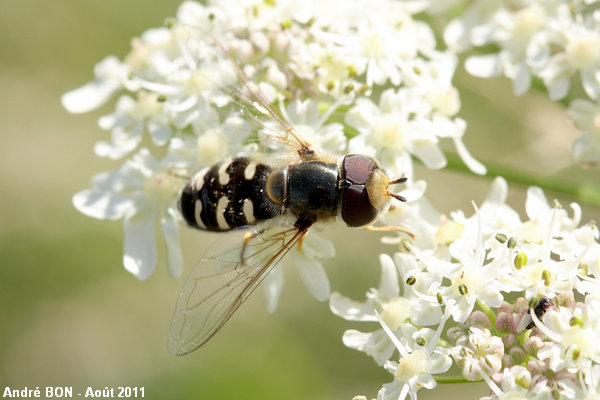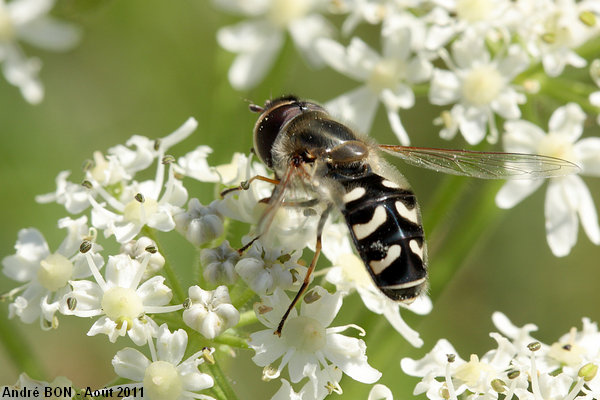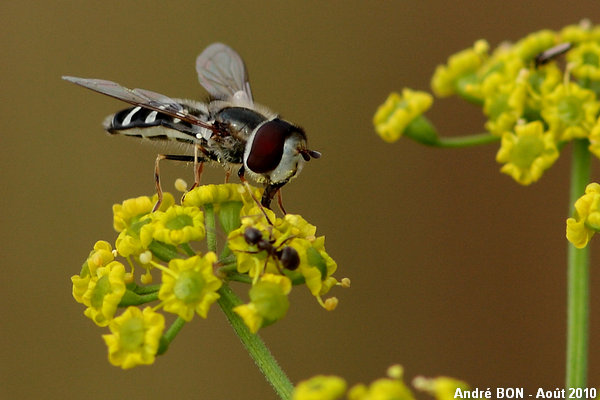


| Scaeva pyrastri (Linnaeus, 1758) |



|
|
Scientific name: Scaeva pyrastri (Linnaeus, 1758) Common name: French name: Syrphe pyrastre, Syrphe du poirier, Syrphe à croissants. Order: Diptera Family: Syrphidae Wingspan : 10 to 14 mm. Biotope: Various open habitats, clearings, woodland edges, road sides, orchards, parks and gardens, in the country but also in towns. Scaeva pyrastri is observed on umbelliferae flowers and on many other flower species. Geographic area: North Africa, Europe, Asia east to the Pacific ocean. North America. Scaeva pyrastri is also a migratory species. Observation period : April to October. Some females may over winter in some regions. |
Scaeva pyrastri has a yellow face with a black vertex and large hairy eyes. The legs are russet. The base of the femora is black. The thorax is a shiny black colour with a green sheen. The abdomen is black and shows three white or creamy lunules on each side. The width of each lunule is almost constant. The first one, on the second segment, is straight. The two following ones, on the third and fourth segments, are curved. The green and sometimes pink larvae are maggot-like and feed on aphids. You can tell the similar species Scaeva selenitica apart with the shape of the lunules. If you draw a tangent line to the hind edge of the lunule at the middle, then you get a line which is parallel to the fore edge of the tergite on Scaeva selenitica while you get an oblique line on Scaeva pyrastri. The colour of the lunules is also sometimes more yellowish on Scaeva selenitica. Hoverflies of the Eupeodes genus differ by their hairless eyes. |
| [To know more about the Scaeva pyrastri] [Next picture] [Top] |

|
I have observed this Scaeva pyrastri on an umbellifer flower. |
| [To know more about the Scaeva pyrastri] [Next picture] [Previous picture] [Top] |

|
On this picture, you can clearly see the oblique orientation of the hind edge of the lunules. |
| [To know more about the Scaeva pyrastri] [Previous picture] [Top] |

|
I am used to observing Scaeva pyrastri in summer. This one was gathering nectar with ants. |